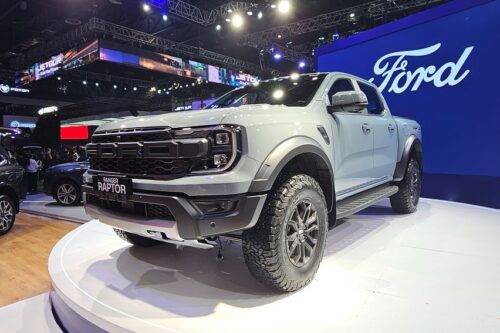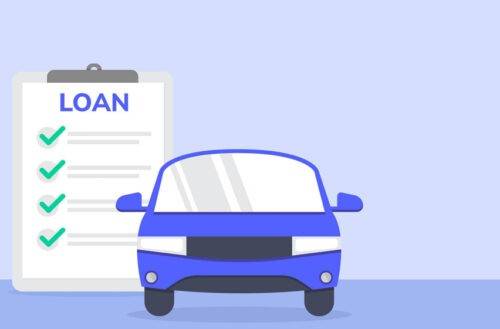Here’s everything a beginner driver should know

Driving is a skill that takes time and practice to perfect. As a beginner driver, it can be overwhelming to navigate the roads and make quick decisions on the spot. However, with the right tips and techniques, you can build the confidence and skills needed to become a safe and responsible driver.
KEY TAKEAWAYS
How long does it take to become a good driver?
It varies from person to person, but it typically takes several months to a year of consistent practice to become a confident and skilled driver.What should I do if I feel nervous or anxious while driving?
If you feel nervous or anxious while driving, take a deep breath and try to relax. You can also use calming techniques like listening to calming music or practicing mindfulness. If you feel overwhelmed, pull over and take a break.Here are some tips that every beginner driver should know. From preparing for driving to dealing with stress and anxiety on the road, we will cover everything you need to know to get started on your driving journey.
Getting prepared for driving
Driving can be an exciting and liberating experience, but it's important to make sure you're prepared before hitting the road. Here are some things to keep in mind:
Getting your driver's license
The first step in becoming a driver is to obtain your driver's license. Make sure to study the rules of the road and practice driving with a licensed adult before taking the test. Once you pass your test, be sure to keep your license with you at all times while driving.
Preparing your vehicle for driving
Before you get behind the wheel, take a few moments to check your vehicle. Make sure your brakes, headlights, and turn signals are all working properly. Check your tire pressure and oil levels, and make sure your windshield wipers are in good condition.
Understanding traffic laws
To be a responsible driver, it is important to understand the traffic laws and regulations in your area. Familiarize yourself with speed limits, road signs, and traffic signals. Remember to always drive defensively and be aware of your surroundings.
Learning basic driving techniques
Here are some basic techniques you will need to master:
Understanding the controls of your vehicle
Before you start driving, take some time to familiarize yourself with the controls of your vehicle. Learn how to adjust your mirrors, seat, and steering wheel, and practice using your turn signals, headlights, and windshield wipers.
Mastering the art of braking and accelerating
Braking and accelerating smoothly are key to driving safely and comfortably. Practice using these controls until you can do so without jerking or jolting.
Turning, stopping, and changing lanes
Learning to turn, stop, and change lanes requires a combination of good judgment and technical skill. Make sure to use your turn signals and check your surroundings carefully before making any maneuvers.
Navigating common driving scenarios
As you gain more experience, you will encounter a variety of driving situations. Here are some tips for navigating some common scenarios:
Driving on city roads and highways
If you are new to driving, it might be best to start by practicing on quiet streets and then gradually working your way up to busier roads and highways. Remember to stay alert and pay attention to your surroundings at all times.
Merging into traffic and changing lanes
Merging into traffic and changing lanes can be challenging, especially during rush hour. Make sure to use your turn signals and check your blind spots before making any maneuvers. When merging, try to match the speed of the traffic you're entering.
Dealing with intersections and roundabouts
Intersections and roundabouts can be tricky to navigate, especially if you are not familiar with the area. Always obey traffic signals and signs, and be sure to yield to pedestrians and other drivers when necessary.
Handling adverse weather and road conditions
Even the most experienced drivers can struggle with adverse weather and road conditions. Here are some tips for staying safe in challenging driving situations:
Driving in the rain
When driving in the rain, make sure to slow down and increase your following distance. Use your headlights and windshield wipers as necessary. If conditions become too dangerous, consider pulling over until the weather clears.
Driving in hot and sunny conditions
Hot and sunny conditions can be just as challenging as rain, especially if you are not accustomed to them. Make sure to stay hydrated and use your air-conditioning as necessary. Wear sunglasses to reduce glare, and be sure to check your tire pressure regularly.
Safety Tips for Every Drive
Driving can be a fun and exciting adventure. However, it is crucial to prioritize safety and follow some basic rules to ensure that you are protected while on the road. Here are some safety tips that every beginner driver should keep in mind:
Wearing your seatbelt correctly
Wearing a seatbelt correctly is one of the most important things you can do to protect yourself while driving. Make sure that you buckle up before starting the car, and that the seatbelt is snug and comfortable. Additionally, ensure that all passengers are wearing their seatbelts before you start the car.
Minimizing distractions while driving
Distractions while driving can pose a severe risk to your safety. Avoid texting or using your phone while driving, as well as other distractions such as eating or applying makeup. Keep your focus on the road.
Defensive driving strategies
Defensive driving is an essential skill for every driver. Keep a safe distance from the vehicle in front of you, always anticipate other driver's actions, and be alert for any potential hazards on the road.
Understanding the importance of vehicle maintenance
Maintaining your vehicle regularly is one of the keys to ensuring your safety while driving. Here are some areas of your car to keep an eye on:
Checking your tires and brakes regularly
Keeping your tires in good condition and ensuring that your brakes are functioning correctly is critical for your safety while driving. Inspect your tire pressure, tread, and signs of wear regularly. Also, check your brakes for any signs of wear or damage.
Maintaining your engine and transmission
Regular oil changes and checking your transmission fluid level can help keep your vehicle running smoothly. Regular tune-ups and maintenance can help you catch any potential issues before they become significant problems.
Keeping your windshield and mirrors clean
Dirty windshields and mirrors can impede your visibility on the road, increasing the risk of accidents. Ensure regular cleaning to keep them clear and free of any dirt or debris.
Dealing with stress and anxiety on the road
Driving can be nerve-wracking, especially if you are a beginner driver. Here are some tips to help you manage stress and anxiety while on the road:
Managing stress and anxiety while driving
Take deep breaths and try to relax your muscles while driving. Remind yourself that you are in control of the car, and that other drivers may also feel nervous at times.
Using calming techniques to stay focused
Listening to soothing music, meditating, or speaking with a passenger may help you stay calm and focused while driving. Experiment with different techniques to find what works best for you.
Knowing when to take a break
If you start feeling overwhelmed while driving, it is essential to know when to take a break. Pull over in a safe spot and take some deep breaths or go for a short walk to clear your mind. Remember that your safety always comes first.
By following these tips for beginner drivers, you can build your driving skills and confidence over time. Remember to always prioritize safety and follow traffic rules and regulations. With practice and a positive attitude, you can become a skilled and responsible driver and enjoy the freedom and independence that comes with it.
Photo from Philippine News Agency, Ortigas Land, Ford Philippines, Prestone, Dylan Afuang, and Roy Robles
- KEY TAKEAWAYS
- Getting prepared for driving
- Getting your driver's license
- Preparing your vehicle for driving
- Understanding traffic laws
- Learning basic driving techniques
- Understanding the controls of your vehicle
- Mastering the art of braking and accelerating
- Turning, stopping, and changing lanes
- Navigating common driving scenarios
- Driving on city roads and highways
- Merging into traffic and changing lanes
- Dealing with intersections and roundabouts
- Handling adverse weather and road conditions
- Driving in the rain
- Driving in hot and sunny conditions
- Safety Tips for Every Drive
- Wearing your seatbelt correctly
- Minimizing distractions while driving
- Defensive driving strategies
- Understanding the importance of vehicle maintenance
- Checking your tires and brakes regularly
- Maintaining your engine and transmission
- Keeping your windshield and mirrors clean
- Dealing with stress and anxiety on the road
- Managing stress and anxiety while driving
- Using calming techniques to stay focused
- Knowing when to take a break
Sell your car at the best price
 Verified and genuine buyers
Verified and genuine buyers
PIMS 2024
- Latest
- Popular
You might also be interested in
- News
- Featured Stories
- Latest
- Upcoming
- Popular
Latest Car Videos on Zigwheels

Car Articles From Carmudi
- journal
- advice
- financing
- insurance


















































































